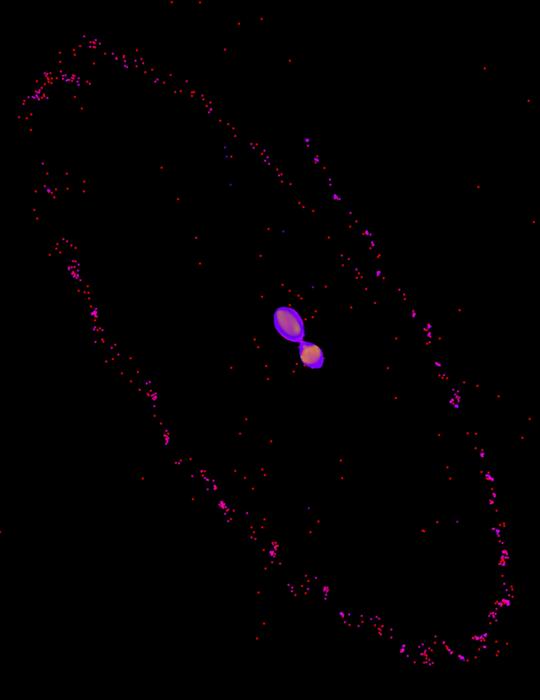Pluto May Have Formed From the Newly Discovered Kiss and Capture Mechanism
New research from the University of Arizona (U of A) claims that Pluto may not have been created with a bang, but with a kiss.The study, published in Nature Geoscience, looks at how Pluto and its moon, Charon, originated after colliding. Instead of destroying each other, the two celestial bodies began to spiral together like a cosmic snowman before separating into two bodies again. Whats unique about the separation is that Pluto and Charon still share the same orbit.This new discovery is helping researchers better understand how planets form and evolve, especially icy worlds. The research team refers to this new form of cosmic collision as a "kiss and capture."Molten PuttyUntil recently, researchers believed that Charon formed similarly to Earths moon via a massive collision followed by deformation and stretching of planetary materials sort of like silly putty until the materials were pulled into Earths orbit and solidified into the moon.Researchers had theorized that Earth was hotter and its surface was more molten, making it easier for the planetary materials to act more fluid during a collision. Whats different about Pluto is that it is far colder than Earth and likely more brittle."Pluto and Charon are different they're smaller, colder, and made primarily of rock and ice," said Adeene Denton, a NASA postdoctoral fellow who conducted the research at the U of A Lunar and Planetary Laboratory and lead author of the study, in a press release. When we accounted for the actual strength of these materials, we discovered something completely unexpected.Read More: Supervolcano Discovered on PlutoPluto Formation with Kiss and CaptureAs the research team ran an impact simulation through advanced software at the U of A, they discovered that Pluto, and what would become Charon, became temporarily stuck together instead of being stretched like putty. The two then began rotating as a single snowman-shaped cluster until they separated into a binary system.According to the researchers, a binary system happens when two celestial bodies orbit around the same center, similar to two figure skaters spinning while holding hands."Most planetary collision scenarios are classified as 'hit and run' or 'graze and merge, said Denton in a press release. What we've discovered is something entirely different a 'kiss and capture' scenario where the bodies collide, stick together briefly, and then separate while remaining gravitationally bound."From this study, the research team believes that Pluto and Charon likely stayed mostly intact during the collision and that during the separation, there may have been a massive heat transfer that made it possible for Pluto to have a subsurface ocean. The research team is already planning additional studies to uncover more of Plutos mysteries and learn more about binary systems."We're particularly interested in understanding how this initial configuration affects Pluto's geological evolution," Denton said in a press release. "The heat from the impact and subsequent tidal forces could have played a crucial role in shaping the features we see on Pluto's surface today."Article Sources:Our writers at Discovermagazine.com use peer-reviewed studies and high-quality sources for our articles, and our editors review for scientific accuracy and editorial standards. Review the sources used below for this article:Nature Geoscience. Capture of an ancient Charon around PlutoNASA. Moon FormationA graduate of UW-Whitewater, Monica Cull wrote for several organizations, including one that focused on bees and the natural world, before coming to Discover Magazine. Her current work also appears on her travel blog and Common State Magazine. Her love of science came from watching PBS shows as a kid with her mom and spending too much time binging Doctor Who.


